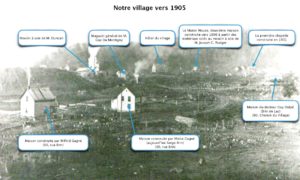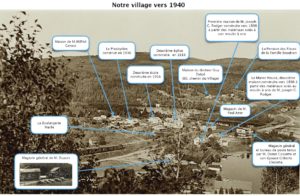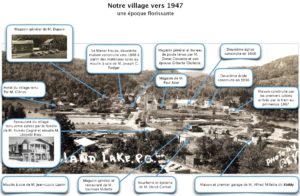Our history
The Native Americans were the first habitants of the region.
They bivouacked on the banks of the lac des Seize-Îles around 500 to 700 years ago (go to the page Our artefacts to learn more).
The modern history of Lac-des-Seize-Îles starts in the 19th century.
1810 to 1888: a number of Iris and Scottish immigrated in the region. They were escaping misery and famine in their country. These newcomers practiced subsistence farming and built sawmills in order to take advantage of the forestry potential.
End of the 19th century: 2 important political reforms politics for colonisation:
- The arrival of railroad in 1892
- The distribution of free land
It is during this period that colonial families arrived by train.
Spring 1897, Moïse Gagné, his sons Moïse, Édouard, Henry, Alphonse and Wilfrid, his son-in-law Antoine Brin and his brother-in-law Joseph Bonneau got off the train (go to page The First settlers to learn more)
1898: The first postal office is identified, in English, as Sixteen Islands Lake.
1901: Creation of the parish of Notre-Dame-de-la-Sagesse. Construction of the first church in 1916. The first priest arrived with the construction of the presbytery in 1936.
1906: Establishment of the Sixteen Islands Lake Union Church (go to page Our religious heritage to learn more).
1914: Founding of the municipality of Lac-des-Seize-Îles on a part of the canton of Montcalm and de Wentworth.
Beginning of the 20th century: a number of villager come to take advantage of the generous environment, both calm and picturesque, either in a chalet bordering the lake or in a boarding house in the village.
In the local shops (Dupuis, Cossette, Millette, Corbeil, Gagné, Clérico, Hazard), we could purchase postcards that were proof of the splendour of these bucolic landscapes.
THE OWNER OF THE GENERAL STORE AROUND 1905:
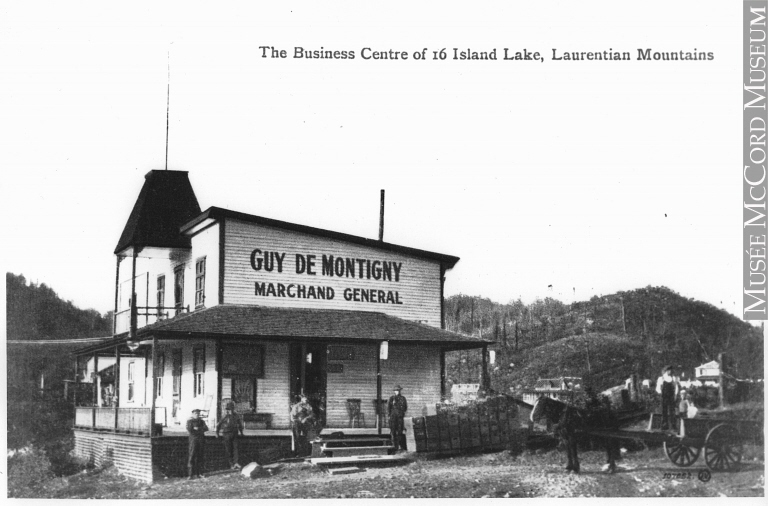 The pavilion
The pavilion
Still in the 20th century, with the new railroad, the Brunet family financed the construction of a railway station, the «Pavillon Brunet».
This pavilion, close to the culvert in the village centre, has witnessed the daily life of the Lac-des-Seize-Îles residents for more than 60 years.
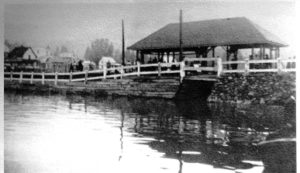 It has received the villagers of all generation secrets in confidence.
It has received the villagers of all generation secrets in confidence.
All those that have known this place still talk about it with nostalgia and great respect.
It was the place where all those waiting for the arrival of the Canadian National train came.
It was the daily event that should not be missed since it symbolized a way of getting information of its time.
It was by train that travelers, mail, freight and information arrived.
Unfortunately, this patrimonial structure disappeared in 1965 following the railway’s dismantle.
However, a committee of citizens have given themselves the goal to erect, in the centre of the village, an exact replica of the pavilion.
Since Spring 2011, it proudly welcomes visitors.
It has become a symbol of the village’s identity. Thanks to grandeur and its strategic position, different activities can be held there.
CLICK IMAGE TO ENLARGE
THE VILLAGE AROUND 1905:
THE VILLAGE AROUND 1940:
